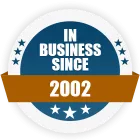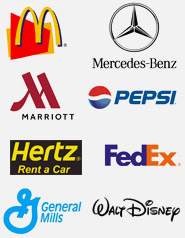How to Wash Car Parking Lots?
How to Steam Clean Marble Floor?
Regular cleaning and maintenance of your parking lot can save you the hassle and cost of frequent future repairs. Prolonged negligence can damage the concrete surface and cause cracks and buildup of dirt and debris. Pressure washer systems designed specifically to clean concrete floors, such as parking lots, can give your car parking area a clean, well-maintained look.
Why use pressure washers?
For cleaning concrete car parking lot, high pressure washers are the ideal cleaning machines. Pressure washers eject water at extremely high pressure to blast away dirt and debris from hard surfaces such as concrete. If there are oil spots, grease marks and other similar type of stubborn dirt buildup, you can get rid of them using hot water pressure washers.
Cleaning car parking lot using pressure washer
Cleaning your dirty and stained car parking lot is easy, if you follow the steps given below:
- How a pressure washer works? : To know the principle on which a pressure washer works, you must read the manual provided with the machine carefully and get familiarized with the various parts and controls. The manual will also recommend engine oil levels to be maintained before you start cleaning the car parking lot. Once you understand the basic working of the pressure washer, it will become easy to handle the cleaning operation independently.
-
- Set up the pressure washer : Connect one end of the high pressure hose to the water source and the other to the pressure washer. The gun assembly of the machine is then connected to the other end of the hose. Make sure the collar snaps into place to make both ends of the connection foolproof. Purge the system of excess air before you start using the machine.
-
- Adding cleaning solution to the process: Stubborn and tough dirt spots may not yield to the power of cold water pressure washers. Adding cleaning solution can help in removing such spots quickly and without having to indulge in manual scrubbing. Using eco-friendly cleaning solution is recommended because it cleans without leaving behind any toxic traces. Make sure the cleaning solution you choose is compatible with the pressure washer.
-
- Starting the car parking lot cleaning: Remove loose debris and other materials that could impede the motion of the pressure washer. Test the pressure level on a small patch of concrete to determine the ideal distance of the spray gun from the concrete surface. The spray gun must be kept moving to ensure an even cleaning pattern. Start cleaning from the corner of the concrete block and work toward the center. Introduce the wands and accessories for specific cleaning tasks, such as cleaning inaccessible corners or parts of the car parking lot.
-
Tips
- Using floor brush attachments can save you loads of time and effort and provide enhanced cleaning results.
- Buy a proven and reputable brand of pressure washer that offers the latest concrete cleaning technology and user-convenience.
- If you are using a heated pressure washer, choose pressure washers that offer variable temperature settings so that you can match the hot water temperature level to the cleaning application.
There are various types of advanced pressure washers available, which when used along with the right accessories and wands, can give you impressive car parking lot cleaning results.


